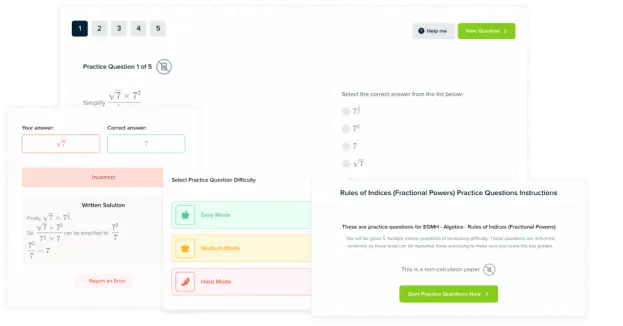Reading Fiction: Sample Questions
Reading Fiction: Sample Questions Revision
Reading Fiction: Sample Questions
Now it’s time to apply what we’ve learned so far!
On this page are some examples of questions that you might find in an exam paper, as well as some explanations as to which AOs you will be marked on within the questions.
Before we get started though, it’s important that we fully understand just exactly what an AO is!:
“AO” stands for Assessment Objective, and they cover different areas and skills that you need to meet in the exam.
Be careful though! Each question has a different AO.
It’s good to familiarise yourself with which questions are matched with each AO, so you know how to tailor your answer to the specifics of the mark scheme.
The AO points

Of course, in the exam, you won’t be explicitly told what AOs you will be marked on, so it’s important to remember which AOs apply to which question.
In Paper 1, you will be given a fictional text to analyse, so the AO points assessed in Section A (reading) are as follows:
- AO1: Identifying and interpreting explicit and implicit information and ideas. Selecting and synthesising evidence from different texts.
- AO2: Explaining, commenting on, and analysing how writers use language and structure to achieve effects and influence readers, using relevant subject terminology to support their views.
- AO4: Evaluate texts critically and support this with appropriate textual references.
AO1: What does it mean?
AO1:
Identifying and interpreting explicit and implicit information and ideas.
Selecting and synthesising evidence from different texts.
An example question you may come across in the exam that covers AO1 would look like this:
“Read again the first part of the source, from lines 1-5.
List four things about Arjuna from this part of the source.”
(4 marks)
- This question would be worth four marks, so it is recommended that you do not spend too much time on it!
- This is is an example of a question asking you to identify information, meaning it assesses the first part of AO1.
AO2: What does it mean?
AO2:
Explaining, commenting on, and analysing how writers use language and structure to achieve effects and influence readers, using relevant subject terminology to support their views.
Here’s an example of what a question that covers AO2 may look like:
“Look in detail at this extract, from lines 6-17 of the source.
How does the writer use language here to describe Kwame’s feelings towards his house?
You could include the writer’s choice of:
- words and phrases
- language features
- sentence forms.”
(8 marks)
- This question is asking us to explore how language is used, specifically between lines 6 and 17, so we can see that AO2 fits in here.
- Make sure you stick within the given lines as you will not be marked on anything outside of them!
- Make full use of the bullet points in the question – they’re there for a reason!
AO4: What does it mean?

AO4:
Evaluate texts critically and support this with appropriate textual references.
Here’s what a question that covers AO4 may look like:
“Focus this part of your answer on the second part of the source, from line 19 to the end.
A student said, ‘Ever since he moved away, the writer portrays Kwame’s feelings of loss and homesickness, but by the end it seems like he is more hopeful for the future.’
To what extent do you agree?
In your response, you could:
- consider your own impressions of Kwame’s feelings
- evaluate how the writer describes Kwame’s feelings by the end
- support your response with references to the text.”
(20 marks)
- This question is asking to what extent you agree or disagree with the statement, meaning you need to come to your own conclusion.
- Again, you should use the bullet points from the question in your answer, and make sure you stick within the lines given.
Exam Board Variation
Questions will always be slightly different across different exam boards, even if they do follow a similar style and address similar themes.
For example, in the AQA English Language paper and the Edexcel English Language paper, the wording of the questions will be slightly different.
However, each question will always have been made with a particular AO specifically in mind.
It’s important then that you learn the specific requirements of the exam paper that you’re sitting so that you can begin to adapt your revision as early as you can to the specifics of the exam board and mark scheme.
The examples on this particular page have all been modelled on the style of AQA GCSE English Language papers.
As different exam boards all have different styles, here is an example from the Edexcel English Language Paper 1 to look at, so you can see for yourself just how much they differ:
“In lines 15-35, how does the writer use language and structure to show the thoughts and feelings of Johnny and Elise?
Support your views with reference to the text”.
(6 marks)
Here, it is asking for both language and structure! It is important to talk about them both equally in your answer.

MME Premium Membership
£19.99
/monthLearn an entire GCSE course for maths, English and science on the most comprehensive online learning platform. With revision explainer videos & notes, practice questions, topic tests and full mock exams for each topic on every course, it’s easy to Learn and Revise with the MME Learning Portal.
Sign Up Now


